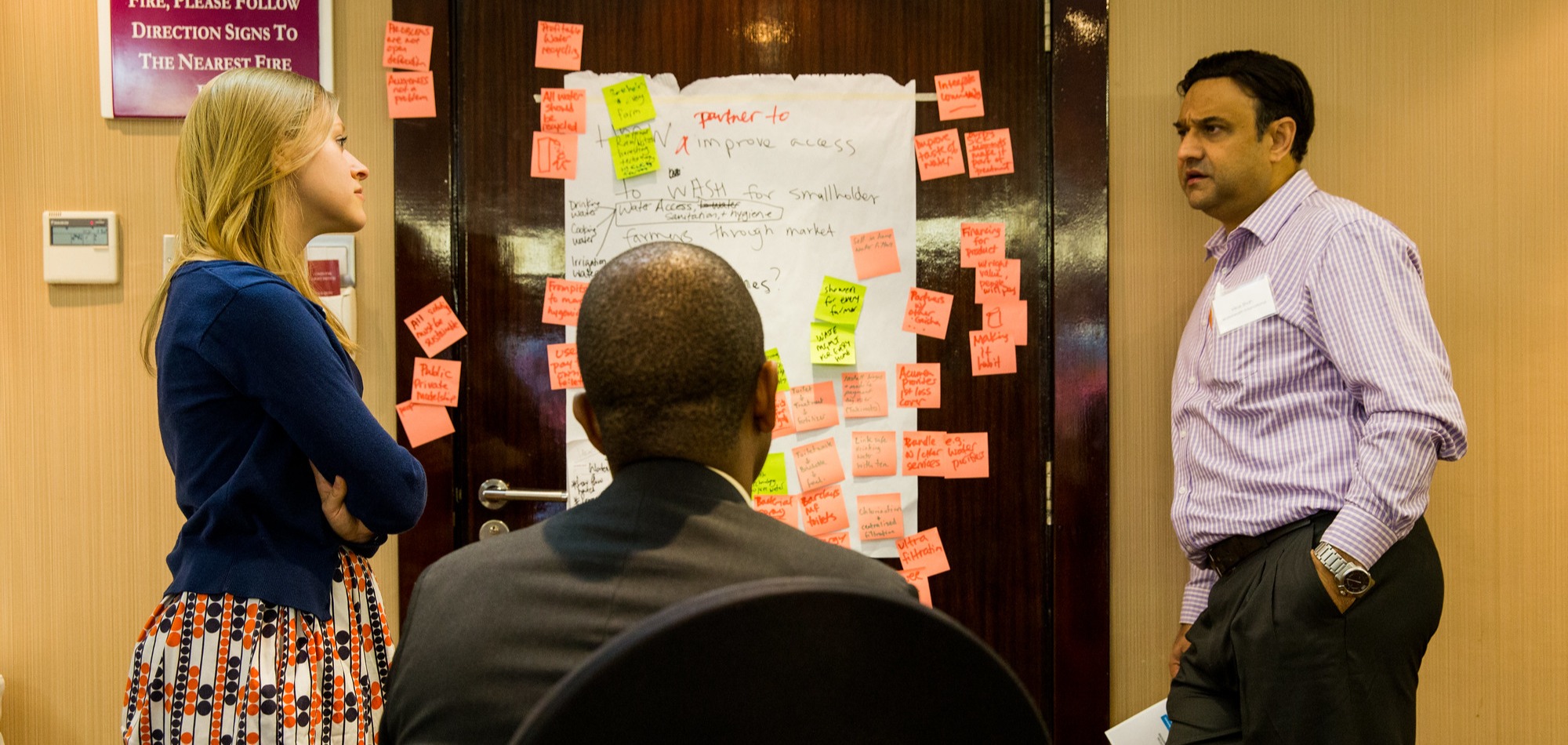Master Innovation
Applying behavioral science to complex social challenges
Advice from Dan Ariely’s lab at Duke University on using critical data
June 01, 2018
Rachael Meleney is the Startup Lab Coordinator for the Center for Advanced Hindsight at Duke University, where she works closely with Professor Dan Ariely. She has coached startups to apply principles of behavioral science—and has seen entrepreneurs both apply these interventions to great effect, and make some common mistakes. She sat down with +Acumen to synthesize her lessons and advice with the great work done by participants who took part in our recent +Acumen Challenge with Southern New Hampshire University and the Scalabrini Center focused on removing barriers to education for female refugees. We think that the lessons she shares are applicable to any social change-maker looking to tackle complex challenges using tools from behavioral science.
Here are 7 tips from Rachel to keep in mind:
1. Get really specific about the outcomes you're trying to achieve and then map the process a user would need to follow to achieve those outcomes
If you want students to earn a diploma or complete an assignment, get “uncomfortably specific” about all the steps that would require. “Be clear about what your target outcomes are and then identify the key behaviors people need to perform to get there. Those are places that are often ripe with barriers,” Rachael says.
2. Use data to find the critical barriers in reaching those outcomes
Look for places where there is a high drop-off rate. “We would focus first on that point in a process because influencing something at that step could create the biggest change,” Rachael says.
3. Categorize the barriers you identify
Try to tag barriers as either being behavioral, cultural, emotional, familial, motivational, etc. Prioritize addressing the behavioral barriers first. These are things in the direct environment that you can change. Larger cultural and structural forces are of course important, but behavioral science is focused on barriers that are within our power to control. “We are capable of designing processes-- such as a degree program-- and therefore can eliminate friction or implement interventions that help people going through the process to be more likely to complete key behaviors. Addressing behavioral barriers are quicker wins in the sense that we can effect change here more easily than structural/cultural change.”
“Things like cultural barriers might be more of an uphill battle to address,” Rachael says, “So it might be smarter to start with process factors you can get really specific about.”
4. Eliminate friction before adding fancy interventions
“Eliminating as much friction as possible from your user journey should be your first focus before getting fancy with interventions based on behavioral concepts,” Rachael says.
A good way to think about this is to consider parts of an experience where people might be tempted to take a break or skip something (both of which are indications of too much friction or a lack of motivation). “To reduce friction for a population like the refugee students, you could do something as simple as putting a class schedule together and then set up default classes for students to attend, thereby eliminating the decision fatigue students might face. Or, if they need to form teams to collaborate on a group project, you could set up default groups for them to work with to make everything less complicated.”
Rachael calls this elimination of barriers, a process of “smoothing out the journey” and that’s usually the best first step.
5. Target barriers that require people to expend a large amount of effort to overcome
Find the steps that require the most effort and energy on the part of the student. Rachael says these will be places where people have to do things like make a decision about something that is big, scary, or complex. This could be things like filling out a lot of paperwork, or finding people to collaborate with on an assignment, or following a complicated process to turn in an assignment. These are barriers that could be effectively targeted with behavioral science.
6. Avoid trying to change psychology or motivation
“You may want to move directly towards trying to change attitudes or psychology,” Rachael says, “However, from a behavior change perspective, we steer away from that. You cannot drive behavior change by trying to change people’s feelings or attitudes. Instead, you should get specific about the details of the process they have to go through. You have to think about the environmental details and the things you can change, eliminate, or add to the process. This means that although issues of family or culture may also be factors, they’re likely not the best candidates for a behavioral science intervention. If you get stuck on the emotional, cultural, or social side of things instead of targeting barriers that are clear and behavior that is specific, these types of interventions might not work.”
7. Be mindful of how cultural context can influence behavior change and test things to make sure that your interventions work in your particular setting
“When you’re applying behavioral science to different cultural contexts, experimentation is important. We really emphasize doing quick tests to ensure that the principles you’re applying work in these different settings. Dan did a study about saving in Kenya. He did a whole variety of different interventions. We found that the interventions we thought must be the most effective, weren’t always right. In fact, we found that an intervention where we gave participants a gold coin and had them scratch off a piece of it every day they contributed money to savings was the most effective. That’s something we might have never anticipated in advance so that’s why it’s really important to test a few different approaches to see what might work with this particular group of people. Implementation without testing is dangerous because it can totally backfire.”
Rachel recommends this Acumen Academy course:
What were the results from the Acumen Academy challenge?
We had over 150 ideas submitted from over 250 participants working in diverse and global teams. The ideas have been summarized and sent to our partners at SNHU and the Scalabrini Centre, and we hope to hear back from them in the coming weeks what they’ve learned or been inspired by from the new ideas! Stay tuned for our report-back, and for the next opportunity to participate in an Acumen Academy Challenge.

.jpg)